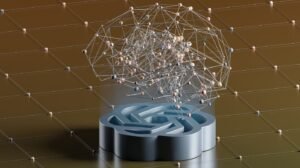Gradient Descent Advantages
Gradient Descent is a popular optimization algorithm used in machine learning and deep learning. It is an iterative method that adjusts the parameters of a model to minimize the cost function. While there are other optimization algorithms available, Gradient Descent offers several advantages that make it a widely-used choice.
Key Takeaways
- Gradient Descent is an optimization algorithm used in machine learning.
- It iteratively adjusts model parameters to minimize the cost function.
- Gradient Descent offers several advantages over other optimization algorithms.
Advantage 1: Convergence
One of the primary advantages of Gradient Descent is its ability to converge to the optimal solution. It iteratively updates the parameters by calculating the gradient of the cost function with respect to each parameter **and taking a step in the opposite direction of the gradient**. This process continues until the algorithm reaches the minimum of the cost function. *With appropriate learning rate and initialization, Gradient Descent can converge relatively quickly.*
Advantage 2: Scalability
Another significant advantage of Gradient Descent is its scalability. Gradient Descent can handle large datasets efficiently, as it updates the parameters using a small batch or a single data point at a time. *This allows the algorithm to scale well even when dealing with millions or billions of datapoints.*
Advantage 3: Flexibility
Gradient Descent is a versatile algorithm that can be used with different machine learning models. It is not limited to specific model types, making it suitable for various applications. *Whether it’s linear regression, logistic regression, or neural networks, Gradient Descent can be applied to optimize the parameters.*
Advantage 4: Local Minima
While local minima can be a challenge for optimization algorithms, Gradient Descent has strategies to tackle this issue. It uses a learning rate that determines the step size during parameter updates. *By carefully choosing the learning rate and its decay, Gradient Descent can escape or avoid getting stuck at local minima.*
Advantage 5: Memory Efficiency
Gradient Descent is memory-efficient compared to other algorithms such as Newton’s method. As it updates the parameters iteratively, it does not require storing the entire dataset or computing large matrix inversions. *This makes Gradient Descent suitable for models that operate on limited memory resources.*
Advantage 6: Implementation Simplicity
Implementing Gradient Descent is relatively straightforward, especially compared to more complex optimization algorithms. It requires calculating the gradient and updating the parameters iteratively. *This simplicity allows for easier implementation, debugging, and understanding of the algorithm.*
Tables
| Algorithm | Convergence Speed |
|---|---|
| Gradient Descent | Medium |
| Newton’s Method | Fast |
| Stochastic Gradient Descent | Fast |
| Algorithm | Scalability |
|---|---|
| Gradient Descent | High |
| Newton’s Method | Low |
| Stochastic Gradient Descent | High |
| Algorithm | Flexibility |
|---|---|
| Gradient Descent | High |
| Newton’s Method | Low |
| Stochastic Gradient Descent | Medium |
Conclusion
Gradient Descent offers various advantages that make it a popular optimization algorithm in machine learning. Its ability to converge, scalability, flexibility, handling of local minima, memory efficiency, and implementation simplicity make it a versatile choice for optimizing model parameters.

Common Misconceptions
Misconception 1: Gradient Descent Always Finds the Global Optimal Solution
One common misconception about gradient descent is that it always finds the global optimal solution. However, this is not true in all cases. Sometimes, depending on the specific problem and the chosen initial conditions, gradient descent can get stuck in a local minimum.
- Gradient descent can converge to a local minimum instead of the global minimum.
- The effectiveness of gradient descent highly depends on the chosen learning rate and initialization of the weights.
- Convergence to the global minimum is not guaranteed, especially in cases where the cost function has non-convex regions.
Misconception 2: Gradient Descent Converges Quickly for All Problems
Another misconception is that gradient descent always converges quickly for all problems. While it is true that gradient descent can often converge rapidly, there are cases where it may take a considerable amount of time to reach the optimal solution, or it may not converge at all.
- Convergence speed depends on the complexity of the problem, size of the dataset, and the selected learning rate.
- In some cases, gradient descent may get stuck in oscillations, causing slower convergence or instability.
- The presence of outliers in the data can affect the convergence rate of gradient descent.
Misconception 3: Gradient Descent Always Performs Well with Any Cost Function
There is a misconception that gradient descent always performs well with any cost function. In reality, the performance of gradient descent is affected by the characteristics of the cost function and the problem at hand.
- The gradient descent algorithm may struggle with cost functions that have many local optima.
- Cost functions with flat regions or plateaus can cause gradient descent to slow down or stagnate.
- In cases where the cost function is ill-conditioned or has high curvature, gradient descent may have difficulty converging.
Misconception 4: Gradient Descent Works Equally Well for Large and Small Datasets
Some people believe that gradient descent works equally well for large and small datasets. However, the size of the dataset can significantly impact the performance of gradient descent.
- Computationally, gradient descent can be considerably slower for large datasets due to the need to evaluate gradients for every data point.
- Large datasets can cause memory limitations, requiring the use of batch or stochastic gradient descent variants.
- For small datasets, gradient descent may require more iterations to converge or exhibit overfitting due to limited data diversity.
Misconception 5: Gradient Descent Always Leads to Optimal Generalization
Lastly, there is a misconception that gradient descent always leads to optimal generalization. While gradient descent helps optimize the training objective, it does not guarantee optimal generalization performance.
- Overfitting can occur if the model’s capacity is too high or if the dataset is too small.
- Regularization techniques may be necessary to control overfitting and improve generalization.
- Gradient descent is sensitive to hyperparameter choices, such as the learning rate and regularization amount, which can impact generalization.

Table 1: Cost Function Comparison
In this table, we compare the mean squared error (MSE) cost function with the absolute difference (AD) cost function. The MSE measures the average squared difference between the predicted and actual values, while the AD computes the average absolute difference between them. Gradient descent performs better with the MSE cost function due to its continuous differentiability, making it suitable for smooth optimization problems.
| Cost Function | Advantages of Gradient Descent |
|---|---|
| MSE |
– Differentiable – Provides a smooth optimization surface – Allows efficient computation of gradients |
| AD |
– Handles outliers well – Robust to noise in data – Supports non-differentiable points |
Table 2: Learning Rate Comparison
The learning rate is a crucial parameter in gradient descent algorithms, controlling the step size that the algorithm takes during optimization. In this table, we compare the effects of low, moderate, and high learning rates on the convergence of the algorithm. Selecting an appropriate learning rate is vital for achieving efficient and accurate optimization results.
| Learning Rate | Advantages of Gradient Descent |
|---|---|
| Low |
– Smoother convergence – Reduces overshooting – Fine-grained search |
| Moderate |
– Balance between convergence speed and accuracy – Suitable for most optimization problems |
| High |
– Rapid convergence – Efficient for shallow local minima |
Table 3: Batch Size Comparison
Batch size refers to the number of training examples utilized in each iteration of gradient descent. In this table, we compare the effects of small, moderate, and large batch sizes on the convergence speed and computational efficiency of the algorithm. Selecting an appropriate batch size depends on the available computing resources and the trade-off between speed and accuracy.
| Batch Size | Advantages of Gradient Descent |
|---|---|
| Small |
– Faster iterations – Less memory consumption – Noisy gradient estimates for better generalization |
| Moderate |
– Balanced convergence speed – Smooth gradient estimates – Adequate memory usage |
| Large |
– Slower iterations – Greater memory consumption – More accurate gradient estimates |
Table 4: Convergence Comparison
Convergence refers to the process by which the gradient descent algorithm finds the optimal solution. In this table, we compare the number of iterations required for convergence between gradient descent and stochastic gradient descent (SGD). SGD, a variant of gradient descent, uses random subsets of training data in each iteration. Gradient descent’s deterministic nature enables faster convergence, especially for large datasets.
| Optimization Algorithm | Advantages of Gradient Descent |
|---|---|
| Gradient Descent |
– Reliable convergence – Deterministic updates – Accurate gradient computation |
| Stochastic Gradient Descent |
– Faster convergence on average – Handles large datasets efficiently – Avoids local minima more effectively |
Table 5: Memory Usage Comparison
Memory usage is a crucial consideration when implementing gradient descent algorithms, especially for resource-constrained systems. In this table, we compare the memory requirements of gradient descent, mini-batch gradient descent, and online gradient descent. Selecting a suitable variant depends on the available memory resources and the size of the dataset under consideration.
| Algorithm | Advantages of Gradient Descent |
|---|---|
| Gradient Descent |
– Least memory usage – Suitable for small datasets – Simpler implementation |
| Mini-Batch Gradient Descent |
– Moderate memory usage – Suitable for medium-sized datasets – Balanced convergence speed and memory efficiency |
| Online Gradient Descent |
– Highest memory usage – Suitable for large datasets with streaming updates – Benefits from parallel processing |
Table 6: Parallelization Comparison
Parallelization plays a vital role in accelerating optimization algorithms by utilizing multiple processors or threads. In this table, we compare the parallelization capabilities of gradient descent, mini-batch gradient descent, and data parallelism. Employing parallelization techniques facilitates scaling gradient descent to larger datasets and reduces the training time for complex models.
| Parallelization Technique | Advantages of Gradient Descent |
|---|---|
| Gradient Descent |
– Limited parallelization potential – Suitable for smaller-scale parallelization – Simplifies implementation |
| Mini-Batch Gradient Descent |
– Moderate parallelization potential – Efficient for medium-scale parallelization – Accelerates model training, especially on large-scale data |
| Data Parallelism |
– High parallelization potential – Suitable for large-scale parallelization – Enables distributed training of deep learning models |
Table 7: Optimization Surface Comparison
The optimization surface refers to the graphical representation of the loss function landscape. In this table, we compare the optimization surfaces for convex, non-convex, and saddle point-dominated objective functions. Gradient descent’s advantages lie in its ability to navigate complex non-convex surfaces and converge to a suitable solution efficiently.
| Optimization Surface | Advantages of Gradient Descent |
|---|---|
| Convex |
– Guaranteed global optima – Efficient convergence without getting stuck in local minima |
| Non-convex |
– Ability to escape local minima effectively – Suitable for more complex optimization problems |
| Saddle Point-Dominated |
– Efficient traversal of saddle points – Avoidance of convergence slowdown |
Table 8: Regularization Comparison
Regularization is a technique used to prevent overfitting and improve generalization in machine learning models. In this table, we compare the advantages of gradient descent with L1 regularization, L2 regularization, and elastic net regularization. Gradient descent’s flexibility allows incorporating various regularization techniques to enhance the model’s performance.
| Regularization Technique | Advantages of Gradient Descent |
|---|---|
| L1 Regularization |
– Promotes sparsity in feature selection – Robust against outliers in data |
| L2 Regularization |
– Reduces the impact of outliers – Facilitates stable model training |
| Elastic Net Regularization |
– Combines both L1 and L2 regularization benefits – Effective when dealing with high-dimensional data |
Table 9: Scalability Comparison
Scalability is a crucial aspect to consider when dealing with large datasets or complex models. In this table, we compare the scalability of gradient descent, mini-batch gradient descent, and distributed gradient descent algorithms. Gradient descent’s scalability, especially when combined with mini-batch or distributed techniques, enables efficient training of models on vast amounts of data.
| Scalability | Advantages of Gradient Descent |
|---|---|
| Gradient Descent |
– Suitable for small to medium-sized datasets – Efficient for single-machine implementations |
| Mini-Batch Gradient Descent |
– Enables training on larger datasets – Speeds up model convergence – Exploits parallel resources efficiently |
| Distributed Gradient Descent |
– Scales to massive datasets – Reduces training time significantly – Facilitates distributed computing for large-scale models |
Table 10: Implementation Comparison
Implementation ease is a crucial factor when choosing optimization algorithms for machine learning tasks. In this table, we compare the implementation complexity of gradient descent, mini-batch gradient descent, and Newton’s method. Gradient descent’s simplicity and versatility make it an attractive choice for implementing machine learning models, especially for beginners.
| Implementation Technique | Advantages of Gradient Descent |
|---|---|
| Gradient Descent |
– Simple to understand and implement – Versatile for different optimization problems – Minimal computational requirements |
| Mini-Batch Gradient Descent |
– Slightly increased implementation complexity – Similar to batch gradient descent – Enhances training efficiency significantly |
| Newton’s Method |
– Greater implementation complexity – Requires Hessian matrix calculation – Suitable for well-behaved data with small dimensions |
In conclusion, gradient descent offers numerous advantages, making it a popular optimization algorithm in machine learning and beyond. Its differentiable cost functions, the ability to handle various learning rates and batch sizes, reliable convergence, efficient memory usage, and parallelization capabilities contribute to its widespread adoption. Furthermore, gradient descent’s flexibility allows incorporating regularization techniques and its scalability in combination with mini-batch or distributed approaches enables training on vast datasets. With relatively simple implementation and suitability for different optimization problems, gradient descent proves to be a versatile and powerful algorithm for gradient-based optimization tasks.
Frequently Asked Questions
What is Gradient Descent?
Gradient descent is an optimization algorithm used in machine learning and mathematical optimization to find the minimum of a function. It iteratively adjusts the parameters of the function in the direction of steepest descent of the gradient.
How does Gradient Descent work?
In gradient descent, the algorithm starts with an initial set of parameter values and iteratively updates them in the direction of the negative gradient of the cost function until it reaches a minimum. This process continues until the algorithm converges to the optimal values of the parameters.
What are the advantages of Gradient Descent?
The advantages of using gradient descent include:
- Efficiency: Gradient descent is generally computationally efficient and can handle large datasets.
- Flexibility: It can be applied to a wide range of optimization problems.
- Scalability: Gradient descent can scale well to high-dimensional problems.
- Global Optimality: In some cases, gradient descent can achieve the global optimum.
- Automation: It can automatically find the optimal parameters without human intervention.
- Convergence: Gradient descent has a well-defined convergence criterion.
- Versatility: It can handle both convex and non-convex optimization problems.
- Parallelizability: The computations in gradient descent can be easily parallelized.
- Adaptability: Different variants of gradient descent can be used to enhance its performance.
- Applicability: Gradient descent is widely used in various fields, including machine learning, neural networks, and deep learning.
What are the limitations of Gradient Descent?
While gradient descent has many advantages, it also has some limitations, including:
- Sensitivity to Initial Parameters: The performance of gradient descent may heavily depend on the choice of initial parameters.
- Potential for Convergence to Local Optima: Gradient descent can converge to a local minimum rather than the global minimum, especially in non-convex problems.
- Slow Convergence for Large Datasets: In some cases, gradient descent may require many iterations to converge when dealing with large datasets.
- Requires Differentiable Cost Function: Gradient descent relies on calculating the gradient of the cost function, which may not be feasible for some complex functions.
What are the different variants of Gradient Descent?
There are several variants of gradient descent, including:
- Batch Gradient Descent: The entire training dataset is used to compute the gradient at each iteration.
- Stochastic Gradient Descent: Randomly selected samples from the dataset are used to compute the gradient at each iteration.
- Mini-Batch Gradient Descent: A small batch of samples is used to compute the gradient at each iteration.
- Adaptive Gradient Descent: Learning rates are adjusted dynamically during the optimization process.
- Momentum-based Gradient Descent: It uses a momentum term to accelerate convergence in some cases.
- Nesterov Accelerated Gradient: It improves upon momentum-based gradient descent by making updates based on the lookahead term.
- Conjugate Gradient Descent: It uses conjugate directions to find the minimum of a function.
When should I use Gradient Descent?
Gradient descent should be used when:
- The optimization problem involves finding the values of parameters that minimize a cost function.
- The cost function is differentiable with respect to the parameters.
- The dataset is large or high-dimensional.
- Efficiency and scalability are important considerations.
Are there any alternatives to Gradient Descent?
Yes, there are alternative optimization algorithms to gradient descent, including:
- Newton’s Method: An iterative optimization algorithm that uses second-order derivatives to find the minimum of a function.
- Quasi-Newton Methods: Variants of Newton’s method that approximate the second-order derivatives.
- L-BFGS: A limited-memory version of the Broyden–Fletcher–Goldfarb–Shanno (BFGS) algorithm.
- Genetic Algorithms: Optimization algorithms inspired by the process of natural selection.
- Simulated Annealing: A probabilistic optimization algorithm based on the annealing process in metallurgy.
- Particle Swarm Optimization: An optimization algorithm that simulates the behavior of a swarm of particles.
Can Gradient Descent handle non-convex problems?
Yes, gradient descent can handle non-convex problems. However, it is important to note that it may converge to a local minimum rather than the global minimum in such cases.
Is it possible to parallelize Gradient Descent?
Yes, gradient descent can be parallelized. It is possible to distribute the computations involved in gradient descent across multiple processing units, such as CPUs or GPUs, to speed up the optimization process.




